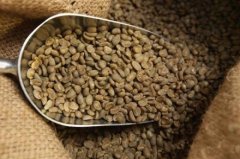The basic knowledge of Coffee defective beans

Moldy beans: because of incomplete drying, or damp in the process of transportation and storage, cyan and white molds grow, which sometimes make the beans stick together. If these moldy beans are not removed, they will produce moldy smell.
Dead beans: beans with abnormal results. The color is not easy to change because of baking, so it is easy to distinguish. The flavor is thin, as harmful as silver skin, and will become a source of peculiar smell.
Immature beans: beans picked before they are ripe have a fishy, disgusting taste. Leaving raw coffee beans for years is a strategy to deal with these immature beans.
Shell beans: produced by poor dryness or abnormal mating; the beans break from the central line and the inside is turned out like a shell. Shell beans can cause uneven baking and are easy to catch fire during deep baking.
Moth-eaten beans: moths invade and lay eggs when the coffee fruit is ripe and red, and the larvae eat the coffee fruit and grow, leaving traces of moth on the surface of the beans. Worm-eaten beans can cause the coffee liquid to be cloudy and sometimes produce a strange smell.
Black beans: beans that mature early and fall to the ground and ferment and blacken when they come into contact with the ground for a long time. It can be easily removed by hand-selected steps. Coffee mixed with black beans will smell rotten and cloudy.
Over-dried beans (cocoa): it is caused by natural drying that the pulp remains and is not fully shelled. With iodine flavor, soil flavor and other flavor, it will give off a bad smell.
Shell beans: endocarp covers the inside of the pulp of coffee beans and remains on the washed coffee beans. The poor heat permeability when roasting and sometimes burning is the reason for the astringent taste of coffee. Others include broken beans, red peel beans (beans that rain naturally and taste dull), stunted beans (small grains of beans that stop growing due to lack of nutrients, strong flavor), and sometimes mixed with corn or pepper, and so on.
Stone: beans harvested are easily mixed with stone or sawdust because of natural drying.
Important Notice :
前街咖啡 FrontStreet Coffee has moved to new addredd:
FrontStreet Coffee Address: 315,Donghua East Road,GuangZhou
Tel:020 38364473
- Prev

Common sense of Coffee beans traditional processing techniques of Coffee in Yunnan
Yufa, which opened in the 1960s and has a history of more than 50 years, stepped into the store as if it had stepped into a time tunnel. The machines displayed in the shop have been used for more than half a century, and the old appliances have found their old flavor. Fang found that the old appliance is not only a kind of nostalgia, but also the accumulation of traditional wisdom of the older generation. Since the spread of self-made coffee from a Hainan chef, the boss of the main coffee supplier to the old villagers in the town has insisted
- Next

How to select coffee beans by hand?
Hand selection: is the step of removing impurities and bad beans attached to delicious coffee beans. Coffee beans are often mixed with foreign bodies, such as stones, sawdust, pieces of metal, grains of soil, fruit of trees, and sometimes coins and glass. In coffee production areas, specific gravity bean selector (using wind power to classify according to particle size and weight) or electronic bean selector (removing defective beans according to color) will be used to prevent it.
Related
- Beginners will see the "Coffee pull flower" guide!
- What is the difference between ice blog purified milk and ordinary milk coffee?
- Why is the Philippines the largest producer of crops in Liberia?
- For coffee extraction, should the fine powder be retained?
- How does extracted espresso fill pressed powder? How much strength does it take to press the powder?
- How to make jasmine cold extract coffee? Is the jasmine + latte good?
- Will this little toy really make the coffee taste better? How does Lily Drip affect coffee extraction?
- Will the action of slapping the filter cup also affect coffee extraction?
- What's the difference between powder-to-water ratio and powder-to-liquid ratio?
- What is the Ethiopian local species? What does it have to do with Heirloom native species?

